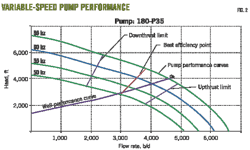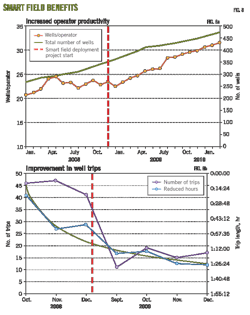The US Pipeline and Hazardous Materials Safety Administration natural gas and hazardous liquids Technical Pipeline Safety Standards Committee voted in December 2009 regarding PHMSA's "One Rule" which addresses a number of proposed reporting requirements for pipeline operators.
These requirements include changes to the definition of natural gas pipeline reportable incidents to include incidents involving any unintended fire or explosion and replacing the $50,000 reporting threshold with a release volume.
TPSSC is a congressionally mandated committee consisting of government, industry, and public pipeline safety experts advising PHMSA as to whether proposed rules are reasonable, practicable, and technically-feasible.
The committee voted against unintended fire and explosion as a trigger for incident reporting and for a volume of 10 MMcf as the new threshold for incident reporting.
The "One Rule" proposal likewise called on operators of hazardous liquids pipelines to complete annual infrastructure reports for each operator and commodity by state. Industry representatives discussed reporting burdens and improvements to the reporting template before the committee adopted a motion supporting the PHMSA proposal.
Incident revision
This proposal would have changed the definition of an incident in 49 CFR 191.3 to establish a new reporting category: an explosion or fire not intentionally set by the operator, consistent with the accident reporting criteria of 49 CFR Part 195. PHMSA maintained adding these events to the definition of a reportable incident would allow it to include additional incidents since fires and explosions are major adverse outcomes raising the risk of death or injury from a pipeline failure (Fig. 1).
PHMSA's analysis of its accident-incident database showed the risk of death or injury increased by 4-5 times if there was a fire or explosion, compared to incidents without a fire or explosion. The agency also said the revision would make the natural gas pipeline incident reporting requirement consistent with the reporting requirement for hazardous liquid pipelines.
The committee noted that examples of newly reportable events included house fires in which the fire eventually involves the gas meter and minor ignitions during inspection and maintenance. The American Public Gas Association asserted the change would have resulted in a huge increase in the number of reportable incidents, giving the appearance distribution pipeline safety has deteriorated.
APGA said PHMSA should not revise the definition of reportable incident. In comments filed with PHMSA, APGA pointed out that before 1984 such fire-only events were reportable and resulted, in PHMSA's words, in an "unproductive paperwork burden."
The American Gas Association maintained newly included incidents would artificially inflate the number of natural gas distribution incidents reportable to the US Department of Transportation. It cited PHMSA estimates that incidents would rise to 300 from 210 while its own analysis estimated more than 5,000 events would be reported under the new criteria. AGA also said PHMSA had underestimated the paperwork burden associated with collecting the new information. PHMSA estimated paperwork would increase by 1,140 hr. AGA estimated an annual paperwork increase of more than 27,000 hr.
AGA concluded it was unreasonable for PHMSA to collect fire-related events when these events were already collected by another government agency, are primarily outside of PHMSA's jurisdiction for distribution incidents, are not within the control of the operator, and would artificially and negatively affect the natural gas industry's safety record.
Reporting threshold
The existing volume measure for released gas included incidents resulting in property damage, including cost of gas lost, of the operator or others, or both, of $50,000 or more (Fig. 2). The increased value of gas, however, has caused more incidents to be reported even though smaller volumes are being released. The "Rule One" proposal sought to use a volumetric basis for unplanned gas loss in determining whether an incident had occurred.
The 10 MMcf threshold was a compromise between an initially proposed 3 MMcf threshold by PHMSA and outside proposals such as the Interstate Natural Gas Association of America's 20 MMcf limit suggested in November 2005.
PHMSA said historical data showed 20 MMcf to be too high to have any impact on distribution incident reporting and that it would reduce the number of gas transmission incident reports to PHMSA, inhibiting the agency's ability to accurately track the number of incidents and learn from the already small number of reportable incidents occurring annually. It instead proposed a reporting criterion of 3 MMcf gas lost, saying it more accurately represented the median volume of gas lost reported through transmission incident reports since 2002. PHMSA also said the 3 MMcf proposed volume represented a large amount of gas from a small pipeline having less potential to do major damage, compared to a small amount of gas from a large pipeline (30-40 in. OD), which could cause major damage.
INGAA based its proposed volume on the $50,000 reporting threshold and the 1985 cost of gas at $2.50/Mcf.
INGAA argued that adopting the proposed 3 MMcf threshold would shift many low-risk pinhole and fitting leaks reported as part of the annual DOT Form PHMSA F 7000-1.1 to an incident reporting status (DOT Form PHMSA F 7000-2). It went on to say that both the number of incident reports and the cost of reporting would increase sharply and the incident database would lose its continuity.
Segmented reporting
The "One Rule" proposal calling on operators of hazardous liquids pipelines to complete annual infrastructure reports for each operator and commodity by state, included detailed infrastructure data such as mileage by OD, decade of construction, SMYS, HCA type, and breakout tanks.
Natural gas transmission pipeline operators submit state-specific annual reports providing PHMSA an understanding of the location, scope, and nature of the pipeline facilities subject to its regulations. Hazardous liquid pipeline operators do not currently report state-specific information on their annual reports, instead reporting only nationally aggregated information for the general characteristics of the hazardous liquid pipelines, along with fundamental integrity management information. PHMSA maintains the nationally aggregated information lacks the granularity of data critical to its understanding the risks posed by and condition of these pipelines.
PHMSA says capturing state-specific information for both gas transmission and hazardous liquid pipelines would provide it with the data necessary to identify areas of potential high risk and allocate resources accordingly, also facilitating efforts to reconcile discrepancies between operator National Pipeline Mapping System submissions and information submitted through annual reports.
PHMSA also said it requires a complete understanding of the scope, nature, and extent of the pipeline infrastructure under each state's purview to accurately assess the effectiveness of funding state pipeline programs and monitor safety performance.
PHMSA held preliminary discussions on the reporting-by-state proposal with representatives of the hazardous liquid pipeline community consisting of representatives from API, AOPL, and hazardous liquid pipeline operators. This industry data team generally supported reporting by state for the specific areas proposed but also urged PHMSA to consider an efficient method for collecting the proposed information. Members of the industry data team also requested PHMSA consider obtaining infrastructure and integrity management information through the NPMS.
PHMSA acknowledged the potential costs and benefits of NPMS submission, foremost among the costs being the need to modify the existing geospatial technological architecture of NPMS to accept the data elements likely to be submitted if NPMS generated the proposed state totals. The need to determine the percentage of hazardous liquid operators able to submit information using geospatial technology stood as an attendant matter.
After discussing these issues the committee supported the PHMSA proposal.
Correction
In the article "Black Sea region stands at energy crossroads," by Vlad Popovici, Fig. 2 (OGJ, Dec. 7, 2009, p. 57) contained errors. The correct version of the figure appears here. The corresponding figure has been updated in the electronic version of the story available at www.ogjonline.com.
An error also occurred in the text of the story. The correct version of the affected text reads as follows: Ukrtransnafta, operator of the Ukrainian oil pipeline system, stopped Russian oil shipments in one of its main pipelines in October 2009 for several weeks, forcing Lukoil's Black Sea Odessa refinery to halt activity. Ukrainian press sources also claimed the country started to import oil directly from Azerbaijan through its Black Sea ports.



